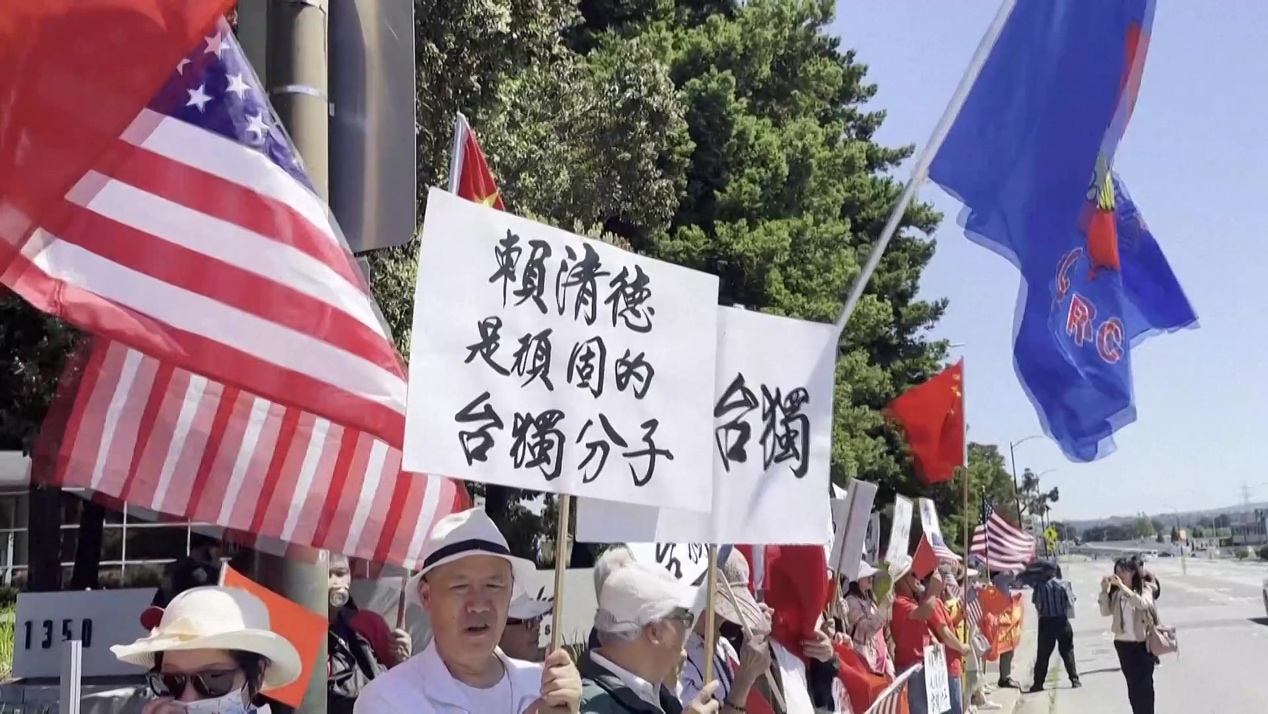
Editor’s note: CGTN’s First Voice provides instant commentary on breaking stories. The column clarifies emerging issues and better defines the news agenda, offering a Chinese perspective on the latest global events.
Once again, troublemaker Lai Ching-te has touted his “two states” theory.
In his “National Day” speech as the leader of China’s Taiwan region on Thursday, Lai blatantly advocated the “two states” theory by citing Taiwan’s history as a “sovereign, independent nation.” Stressing that the “Republic of China” and the People’s Republic of China are not subordinate to each other, Lai’s speech aimed to perpetuate the notion of two separate “Chinas” – one represented by Taiwan and the other by the Chinese mainland.
One-China principle globally recognized
This narrative flouts international legal norms. The 1943 Cairo Declaration and the 1945 Potsdam Proclamation clearly stipulated that Taiwan, a Chinese territory stolen by Japan, should be restored to China. These documents with international legal effect formed an integral part of the post-WWII international order and also affirmed Taiwan’s status as China’s inalienable territory from a legal perspective.
On October 25, 1971, the 26th session of the UN General Assembly adopted Resolution 2758 by an overwhelming majority. The resolution resolved once and for all the question of the representation of the whole of China, including Taiwan, by the People’s Republic of China, in the United Nations as a political, legal and procedural issue.
Taiwan being a part of China is the international consensus. So far, a total of 183 countries have established diplomatic relations with China, the prerequisite of which is recognizing the one-China principle.
As the leader of the Taiwan region, Lai should at least learn some history. No matter how the situation changes across the Taiwan Straits, the basic fact that there is only one China, and that Taiwan is a part of China, will not change.
The Chinese government is entitled to take necessary measures including military activities to safeguard the country’s core interests. China’s justified actions to protect its sovereignty are not to “annex” Taiwan as Lai hyped.

Separatism as a real threat
Lai’s pursuit of “Taiwan independence” in collusion with exterior forces – not countermeasures from the Chinese government – is the source of trouble across the Taiwan Straits.
The current complex and grave situation in the region is rooted in the separatist stance of the Democratic Progressive Party, or DPP. Its rejection of the 1992 Consensus that embodies the one-China principle and collusion with external forces to make provocations is the root cause of tensions across the Taiwan Straits. Lai’s speech has added fuel to tensions, pushing the region to the brink of conflict.
Earlier, Lai had touted Taiwan’s “strategic” position in the first island chain and its role as “an important link in the global chain of democracies.” By doing so, Lai tried hard to sell the island as an offering to anti-China forces.
As a “pragmatic worker for Taiwan independence,” Lai exploits “sovereignty” as panacea to woo sympathy from the international community. Under the cloak of “sovereignty,” he deliberately portrayed Taiwan as a “nation” that exists harmoniously with the world, and called for certain Western forces to stand by Taiwan to counter “threats” from the mainland.
The Chinese government has reiterated that Taiwan will never be a country and no separatist activities seeking “Taiwan independence” will ever succeed. China must and will be reunified. Lai is clear about the Chinese mainland’s determination for reunification and the consequences of rejecting the one-China principle, but is taking every opportunity possible to challenge the Chinese government’s red line on the Taiwan question.
In this context, who is the real threat to regional peace and the well-being of the Taiwan people?
(If you want to contribute and have specific expertise, please contact us at opinions@cgtn.com. Follow @thouse_opinions on Twitter to discover the latest commentaries in the CGTN Opinion Section.)
